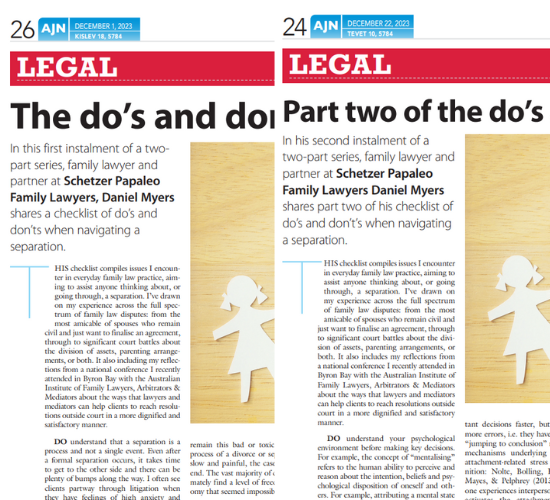It is common in some cultures such as mine (Indian), for parents to gift their sons and/or daughters in law gold and jewels for their wedding celebrations. This is seen as a blessing and a gift to embrace the relationship. But what happens when a couple separates? Is the wedding jewellery included in the asset pool? Who keeps the wedding jewellery?
As the value of jewellery is its second-hand value, it tends to be excluded from the asset pool as it does depreciate significantly.
The most common jewellery gifted in cultural weddings is of course, gold! It varies from bangles to earrings to necklaces, and sometimes has exotic stones and gems like sapphires, rubies and (if you’re really lucky) diamonds. In some cases, gold is custom made and sized perfectly, but this can severely impact its second-hand value, and many choose to exclude jewellery because of its sentimental or nominal value.
Though some items may not take the same ‘shape’ of an engagement ring, they can still hold cultural significance and share a similar concept. For instance, in Hindu weddings, the wedding band for the bride is actually replaced by a gold necklace, also known as a thali or mangalsutra.
So, what happens if you do separate? What happens to your thali and the rest of the wedding jewellery?
Negotiations as to an agreed value may be suggested. If a value cannot be agreed, it should be valued by an independent valuer and then accounted for in the asset pool for distribution.
Who might keep the wedding jewellery?
This becomes more complicated as there are a number of factors to consider, such as:
- the jewellery’s value alongside the total value of the property pool;
- the length of the marriage;
- the financial and non-financial contributions made by each party during the marriage; and
- each party’s future needs as they emerge from the relationship following separation.
The case of Damiani & Damiani included the wife’s engagement ring, valued at $15,000 into the asset pool. The engagement ring was ordered to be returned to the husband and was included as an asset on his side of the balance sheet. In this case, the parties were considered to be in a short relationship, being less than 5 years.
In these circumstances, jewellery gifted to a couple at marriage (before they commenced cohabitation) could be considered as an initial contribution.
For example, if your family gifted your spouse gold for the purposes of marriage, it may be considered as an initial contribution made on your part. In these circumstances, you may be entitled to have the jewellery returned to you.
In longer marriages, additional factors would need to be considered, but again, there is no set approach as to how this issue is tackled.
We can however, offer guidance on how this issue can be addressed.


